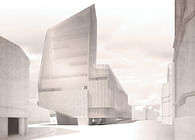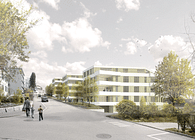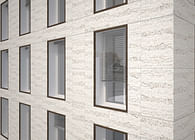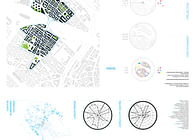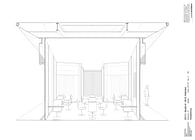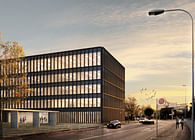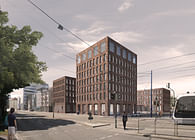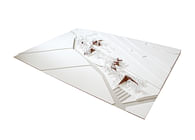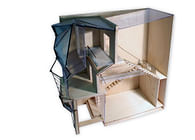
/ PHENOMENOLOGY
It is clear that Switzerland is a land of contrasts; through landscape, climate and culture, there is a constant language of dualities. The site at Hönggerberg in particular offers almost a micro-climate of these conditions such as the proximity of the forest to the city, the vernacular to contemporary, and the mystical qualities contained in its density compared with the openness of its edge. The classical interpretation of a ‘Pleasure Garden’ also sees a strong focus on duality and juxtaposition of divine order with nature; an interpretation that I feel many can relate to and admire through phenomenology. This scheme therefore aims to offer the opportunity to spark the imagination and evoke memories that people associate with the relationship of order and nature, particularly with regard to Swiss culture. I have therefore considered the whole forest area as the site boundary as I feel it is key to deriving vivid phenomenological possibilities.
/ ABSTRACTED TOPOGRAPHY
Topography is triangulated for the main half of the scheme primarily to aid circulation, territorial management and water irrigation, as well as contributing to the overall contrasting experiences of
the gardens.
/ STRUCTURE
The primary structure and architectural language of the scheme consists of thin concrete columns placed on the 4.8m modular grid. They are 250mm thick and range in depth of up to 1m along the main corridor and house the ventilation extraction from the exhibition hall. They support the lightweight truss that forms the wrapping roof of the hall which transfers forces to the mass walls
(storage area, trombe wall and elevator core)
Status: School Project
Location: Zürich, CH
